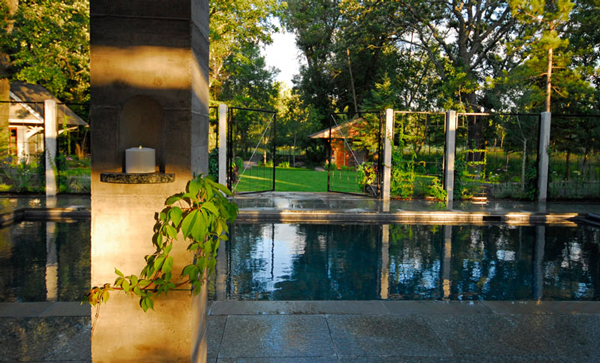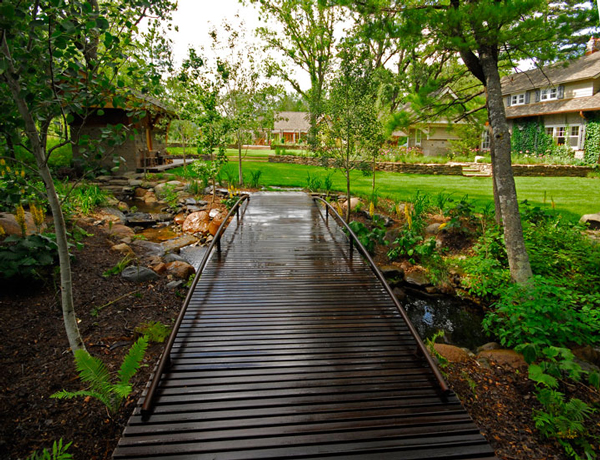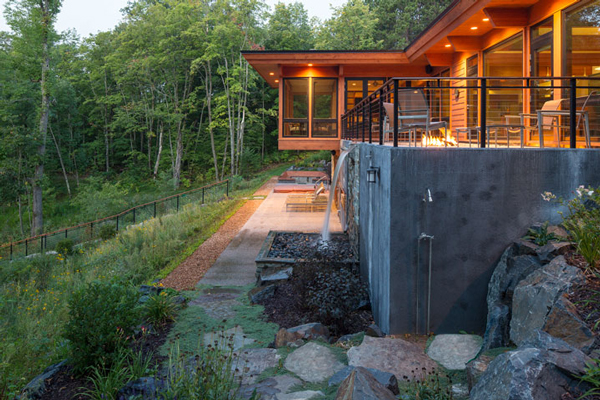 Winter is certainly showing its true colors around Minnesota lately. Taking a break from the cold, we’re taking a warm walk around some of Katherine Hillbrand’s projects as she explains finding a sense of place on her projects from a prior post. Enjoy!
Winter is certainly showing its true colors around Minnesota lately. Taking a break from the cold, we’re taking a warm walk around some of Katherine Hillbrand’s projects as she explains finding a sense of place on her projects from a prior post. Enjoy!
When potential clients come in to talk to an architect about building a home, they bring with them a palpable sense of energy, excitement, anticipation and a certain amount of anxiety.
Their attention is often centered on the house itself; number of rooms, adjacencies, the overall look, potential size and related building cost. But a home (a library, an office, a store, or any other inhabited space) is more than just an isolated structure with rooms. It is a living place within a much larger “place”.
Architects often refer to this larger ‘place’ as the matrix or milieu. I like to think about entering a home, not at the doorstep but when we step into its matrix, or the property itself. Whether it be an urban lot, a secluded woods, a mountaintop, desert or lake lot, it is important to spend the time to pay attention to and understand this larger setting.
At the most basic level, it is imperative to pay attention to the physics of the site. It is important to evaluate the following and if necessary, invite a licensed civil engineer, landscape architect or conservationist to address each:
- The lay of the land or topography and how it impacts access and placement.
- Vegetation: Are there significant trees that you want to save? Are there opportunities for passive or active solar energy?
- Soil conditions: Is the soil quality adequate? Bedrock, clay, sand and organic matter, each require specific foundation strategies.
- Site water and drainage: How high is the water table? Are there drainage issues that would impact the foundation or a neighboring property?
- Prevailing weather and wind. How will this affect the openings in your structure?
- Snow loads and plowing, need I say more!
Furthermore, it is important to evaluate access to utilities or existing infrastructure. Bringing electricity to a remote site can have surprising and profound cost implications!
Then there are the social aspects of place:
- Is there a good school system and educational opportunities?
- Is the neighborhood a safe place and is there adequate security?
- Are there nearby conveniences, shopping and medical resources?
- Is the area congested? Is there enough privacy?
- Is there a friendly sense of neighborhood?
In addition to all of these elemental attributes of site, there are other very tangible and immediate qualities of place that impact our habitation on a daily basis.
By spending a little uninterrupted time on site at the onset of design, you can assess a number of qualities, either favorable or problematic, that may not be immediately evident. Ideally, experiencing the site at different times of the day or even different seasons can add to your understanding.
Visual
Because we are a visual society, view is often the most compelling design initiative. It is interesting to describe the different kinds of views you may have from a variety of vantages. Some may be vast and comprehensive, others restrained and intimate. Both are valuable. Some less desirable aspects of the site may need to be concealed.
Sound
Traffic noise can ruin a quiet evening. The sound of ocean waves can be relentless. Fire station sirens, airport noise, the hum of a transformer, any number of annoying sounds may inform the layout of rooms. Yet there are some noises that that we may want to capture, the sound of a nearby brook, or wind in the trees.
Odor
Unpleasant odors that drift in from nearby factories or farms can flummox our attempts at natural ventilation or even turn us into prisoners in closed house. At the same time, there may be nearby pleasant smells that we would want to capture. A field of cut hay or the smell of pines.
Taken altogether, the places we build in are often rich and complex. If we study them well, we are able synthesize our designs to harmonize with the space beyond our walls.





